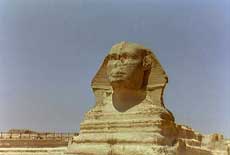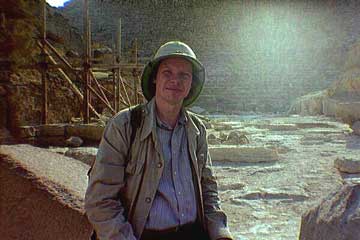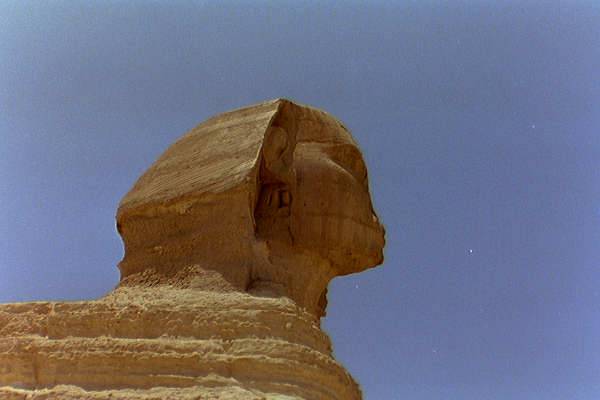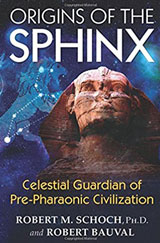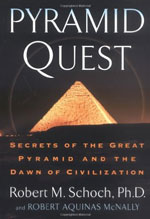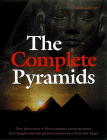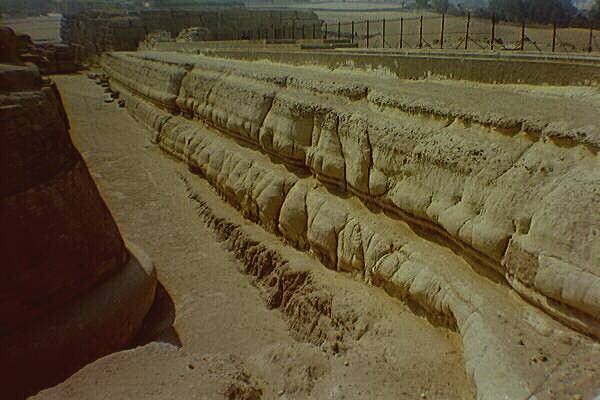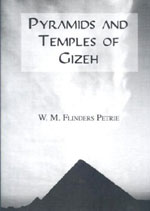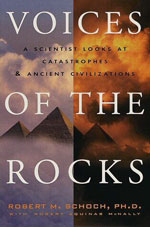
The Great Sphinx Dating Debate
–
page six
text translation service for many worldwide languages
|
|
|
|
Comments by Robert M. Schoch on the Geological Analysis of Ian Lawton and Chris Ogilvie-Herald
found in chapter 7 (“The Age of the Sphinx”) of
“Giza: The Truth”.
Dr. Robert M. Schoch continues the debate
…
“Origins of the Sphinx:
Celestial Guardian of Pre-Pharaonic Civilization”
by
Robert M. Schoch Ph.D.
and
Robert Bauval
Get This Book From:
Amazon.com
Amazon.co.uk
Today is
|
Books about the Great Sphinx & Pyramids
“Pyramid Quest: Secrets of the Great Pyramid and the Dawn of Civilization” by &
EU English Edition
“How is it that the Great Pyramid exercises such a gripping hold on the human psyche adding cryptic grace and framing myriad claims of New Age “pyramid power”? In “Pyramid Quest”, Robert M. Schoch and Robert Aquinas McNally use the rigorous intellectual analysis of scientific inquiry to investigate what we know about the Great Pyramid and develop a stunning hypothesis: this ancient monument is the strongest proof yet, that civilisation began thousands of years earlier than is generally thought, extending far back into a little-known time.
In tracing that story, we come to understand not only the Great Pyramid but also our own origins as civilised beings.”
“The Complete Pyramids: Solving the Ancient Mysteries” by
&
EU English Edition
“For centuries the pyramids have inspired passionate theories about their origins, purpose and method of construction. In this full work on the major pyramids of Ancient Egypt, the author surveys the history, building and use of the pyramids. He examines both the practicalities and logostics of their construction and their conceptual aspects – their cosmology and iconography and their intriguing texts.”
Mysteries Bookshoppe |
“Ian Lawton and Chris Ogilvie-Herald (pp. 324-327), have also criticized my analysis of the seismic data. Unfortunately, they make a number of incorrect assumptions and perpetuate misunderstandings. For instance, Lawton and Ogilvie-Herald (pp. 324-325) claim that I assumed that “the subsurface weathering has been caused by rainfall seeping down through the bedrock floor of the enclosure” when in fact I never postulated that to be the case at all.
They then further argue incorrectly that when the Sphinx enclosure is filled with sand, as it has been for much of its existence, the sand will protect the underlying bedrock floor from subsurface weathering. Lawton and Ogilvie-Herald fail to understand the nature of subsurface weathering. Subsurface weathering is essentially a mineralogical and petrological change in the rocks that proceeds once the rock surface is exposed to the air or atmosphere (such as occurred when the core body of the Sphinx was excavated), no matter what the climate is like. Loose porous sand piled up in the Sphinx enclosure will not significantly protect the bedrock from this type of weathering.
This type of weathering is certainly not caused primarily by rainfall collecting on the rock surface and seeping down. It could even be argued that in some cases a moister climate with periods of standing water on the rock that protects the surface from atmospheric exposure may actually result in a slower rate of this form of subsurface weathering than may occur under dryer conditions. To further dismiss the seismic data, Lawton and Ogilvie-Herald go on to claim (page 325) that “it is almost certain that the subsurface erosion has been caused far more by hydraulic and capillary action over the many millennia since the bed was laid down than by relatively recent rainfall and exposure.”
They are simply wrong. It is subsurface weathering, not erosion (erosion is where the rock is actually carried away), that is under consideration here, and postulating unknown and undocumented mechanisms of “hydraulic and capillary action” as a way to explain the data is essentially meaningless. Furthermore, their explanation of hydraulic and capillary action, quoted above, does not address the discrepancies in subsurface weathering seen within the Sphinx enclosure.
Concerning the use of the seismic data to date the initial excavation of the Sphinx: It has taken about 4,500 years for the subsurface weathering at the younger, western-most floor of the Sphinx enclosure to reach a depth of about four feet (assuming that the western end was fully excavated to approximately its present state during Old Kingdom activity at the site – – see further discussion below). Since the weathering on the other three sides is between 50 and 100 percent deeper, it is reasonable to assume that this excavation is 50 to 100 percent older than the western end. If we accept Khafre’s reign as the date for the western enclosure, then this calculation pushes the date for the Great Sphinx’s original construction back to approximately the 5000 to 7000 B.C. range.
I believe this estimate nicely ties in with the climatic history of the Giza Plateau and correlates with the nature and degree of the surface weathering and erosion features. This estimate can be considered a minimum if we assume that weathering rates proceed non-linearly (the deeper the weathering is, the slower it may progress due to the fact that it is “protected” by the overlying material), and there is the possibility that the very earliest portion of the Sphinx dates back to before 7000 B.C.
However, given the known moister conditions on the Giza Plateau prior to the middle third millennium B.C. versus the prevailing aridity since then, some might argue that initial subsurface weathering may possibly (but not necessarily) have been faster than later weathering, and this could counter balance the potential “non-linear” effect mentioned in the last sentence.
In other words, the early moist conditions might, crudely, give deeper weathering which could appear to give it an “older” date but this is countered by the non-linear nature of the weathering which could appear to give it a “younger” date. In the end, based on many hours of analysis and rumination, I am satisfied that the two opposing factors roughly cancel each other out and a crude linear interpretation of the data is justifiable. In this manner, I return to my estimate of circa 5000 to 7000 B.C. for the oldest portion of the Sphinx, a date that is corroborated by the correlation between the nature of the weathering in the Sphinx enclosure and the paleoclimatic history of the region.”
Dr Robert M. Schoch’s response to criticisms by Ian Lawton & Chris Ogilvie-Herald in their book “Giza: The Truth” continues on:
|
“Voices of the Rocks: A Scientist Looks at Catastrophes and Ancient Civilizations” by
EU English Edition
“The great 19th-century battle between catastrophists and uniformitarians seemed to end with the notion of global cataclysms being dismissed as a back door to the supernatural.
But the catastrophist theory has gradually become more and more plausible, so that now, less than a hundred years later, it is widely believed that mass extinctions are linked to meteor strikes.” |
a selection of books about
Ancient Egyptian Mysteries
Prints & Posters of Ancient Egyptian Art |
Ancient Egyptian Mysteries Bookshoppe
please take a look at our Ancient Mysteries Bookshoppe for a wide selection of books
that challenge orthodox views of prehistory on every continent
|
|
2019 Skywatching Calendar |
News & New Discoveries |
Marine Archaeology News 2019 |
Astro-Archaeology News 2019
The Morien Institute
